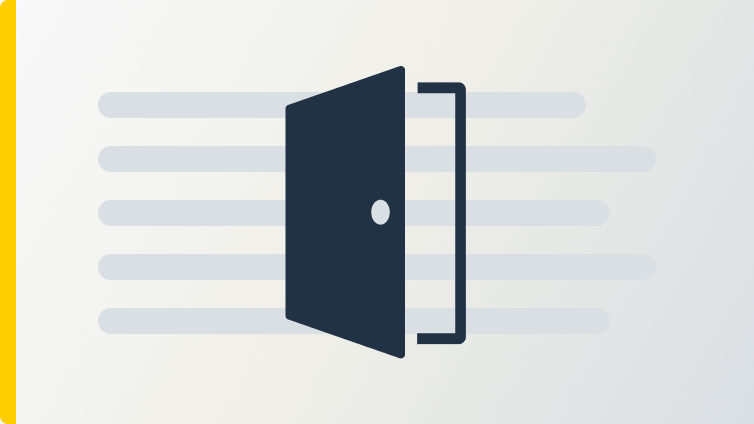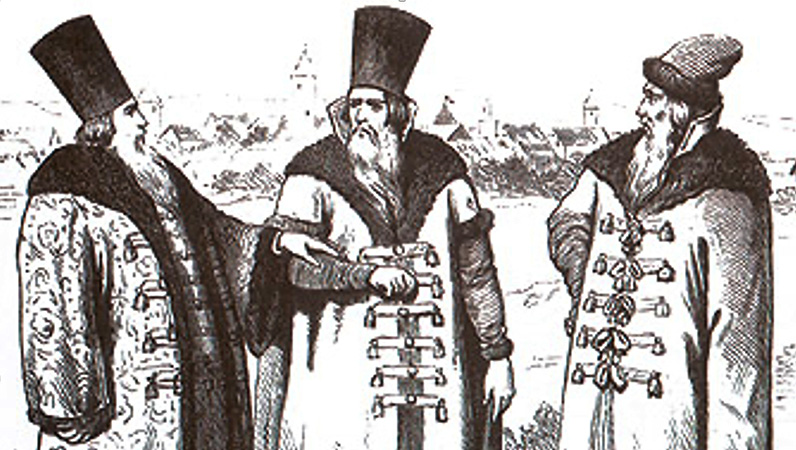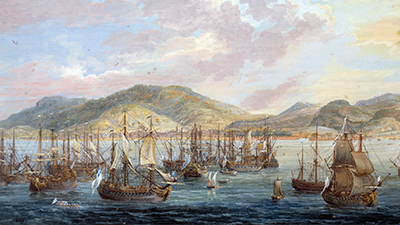Changing Social Hierarchies from 1450 to 1750 CE
Driving Question: In what ways have social roles and traditions persisted or transformed over time?
The new age of global exchange networks not only had a massive impact on the global economy and environment, it also dramatically altered social interactions and organizations in states all around the world. Migration, whether voluntary or involuntary, also contributed to changing the composition of populations in various regions, which further strained the organization of different states. In this lesson, you will learn how states reacted to these changes in a variety of different ways.
Learning Objectives
- Explain how social categories, roles, and practices have been maintained or changed over time.
- Assess how transatlantic migration patterns changed from c. 1450 to 1750.
- Analyze primary source documents to assess changes and continuities in labor and social hierarchy from c. 1450 to 1750.
- Evaluate the changes and continuities to economic and labor systems as new transoceanic empires expanded.
Opener: Changing Social Hierarchies
To teach this lesson step, refer to page 3 of the Lesson 4.7 Teaching Guide.
From rigid hierarchies to royal perks, explore how empires shaped who got ahead, who stayed below, and who pushed back against the status quo.
Source Collection: Labor and Social Hierarchy c. 1450–1750 CE
To teach this lesson step, refer to page 3 of the Lesson 4.7 Teaching Guide.
Primary source documents can give us insight into what really happened in history. In this exercise, you will use such documents to examine the changes in labor and social hierarchies from 1450-1750. As always, use the Quick-Sourcing Tool to help you.
Transatlantic Migration Patterns
To teach this lesson step, refer to page 3 of the Lesson 4.7 Teaching Guide.
The first movements of large groups of people across the Atlantic Ocean had numerous causes. Whatever the causes, migration from Africa and Eurasia to the New World increased significantly beginning in the late fifteenth century.
-
Guiding Questions
-
Before you read
Preview the questions below, and then skim the article. Be sure to look at the section headings and any images.
While you read
Look for answers to these questions:
- What three key events shaped transatlantic migration patterns in this period?
- What were the main reasons Europeans voluntarily migrated to the Americas in this era?
- How did the forced labor of African and Indigenous people in the Americas affect the lives of working-class Europeans?
- How did the abolition of the slave trade change transatlantic migration patterns yet again?
After you read
Respond to the following questions:
- To what extent does this article provide evidence to explain the continuities and changes in economic systems and labor systems?
- How did the shape of communities change in the Americas due to the circulation of both voluntary and involuntary migrants? Which groups were easily able to shape their new communities, and which groups appear to have had more difficulty? How might these different experiences affect societies in the Americas, still, today?
Image Analysis: Social Hierarchies
A picture really can tell a thousand words! Reinforce your understanding of changing social hierarchies through an analysis of a painting.
Social Change in Early Modern Empires
As empires expanded, rulers had to contend with diverse populations. The methods they used to help maintain order were complex and varied.
-
Guiding Questions
-
Before you read
Preview the questions below, and then skim the article. Be sure to look at the section headings and any images.
While you read
Look for answers to these questions:
- What are some of the ways that rulers and governments historically dealt with diversity in their societies? Provide an example of each method.
- How did the Qing Dynasty manage diversity in seventeenth-century China?
- How did Mughal rulers’ policies on diversity change from the sixteenth to the seventeenth century?
- Describe the casta system in the Spanish Empire from c. 1450 to 1750 CE.
- How did rulers rely on aristocrats but also attempt to control them? Describe two examples.
- What other groups did rulers rely on to help their states operate efficiently and productively? Describe two specific examples.
After you read
Respond to these questions:
- Which system was most effective at dealing with issues of diversity in empires from c. 1450 to 1750 CE: co-optation, suppression, or integration? Explain your reasoning.
- How did states maintain or change social categories and practices from c. 1450 to 1750 CE?
Tracking Changes and Continuities
To teach this lesson step, refer to page 4 of the Lesson 4.7 Teaching Guide.
Feedback fuels improvement—track your students’ CCOT progress with the CCOT: Feedback Form.
The more things change, the more they stay the same. Or do they? Let’s find out by evaluating changes and continuities from Unit 3 to Unit 4!
Closer: Changing Social Hierarchies
To teach this lesson step, refer to page 8 of the Lesson 4.7 Teaching Guide.
The OER Project Writing Guide emphasizes the importance of informal writing in the course.
You have made predictions about what you might encounter in these units, as well as categorized information by themes. It’s time to see if your predictions were right using the Themes Notebook.






